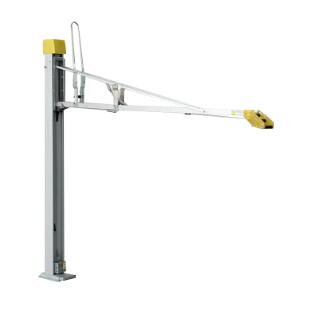How to Choose the Right Basic Vertical Bike Rack for Your Standard Bike
2024-09-06
If you're tired of tripping over your bike or looking for a way to declutter your space, a basic vertical bike rack might be the perfect solution. But with several options on the market, how do you choose the right one for your bike? This guide will help you understand what to look for when selecting the best vertical bike rack for your standard bike.
1. Check for Bike Compatibility
Before purchasing a vertical bike rack, it’s essential to ensure that it’s compatible with your specific bike. Standard bikes typically refer to road, hybrid, or mountain bikes with wheel sizes between 26" and 29". Most vertical racks are designed to accommodate these common wheel sizes, but it’s always a good idea to double-check the product specifications.
- Wheel Size: Ensure that the rack’s hook or clamp fits your bike's front tire.
- Weight Capacity: Confirm that the rack can support the weight of your bike, especially if you have a heavier mountain bike or e-bike.
2. Consider the Type of Mounting
Vertical bike racks come in two main configurations: wall-mounted and free-standing. Each has its advantages depending on your storage needs.
- Wall-Mounted Racks: These are great if you're looking to save space and keep your floor clear. Wall-mounted racks require you to drill into the wall, so make sure you have a suitable surface, like a stud or masonry, for secure installation.
- Free-Standing Racks: These racks don’t require any installation and can be moved around as needed. They are a great option for renters who cannot drill into walls, or for those who want a flexible solution that can be relocated easily.
3. Durability and Materials
Durability is key when selecting a bike rack, as it needs to securely hold the weight of your bike over time. Look for racks made from sturdy materials like steel or heavy-duty aluminum. These materials offer a longer lifespan and ensure that your bike remains safe and stable while stored.
- Coating: Racks with protective coatings, such as powder-coated steel, provide additional durability and help resist rust or corrosion, making them suitable for garages or outdoor storage.
4. Ease of Installation and Use
For wall-mounted racks, ease of installation is an important factor. Choose a rack that comes with clear instructions and includes all necessary mounting hardware. The more user-friendly the design, the quicker you’ll have your rack installed and ready to use.
- Ease of Access: Make sure the rack is designed so that lifting your bike onto the hook or clamp is simple. Some vertical racks even come with built-in supports or stands to help guide the bike into place.
5. Space Considerations
Before purchasing, measure the available space where you intend to install or place the rack. Vertical bike racks are fantastic for saving floor space, but you'll need to ensure you have enough clearance for the height of the bike once it's mounted.
- Wall Height: Make sure your wall is tall enough to store your bike vertically, allowing extra space for easy removal.
- Floor Space: If opting for a free-standing rack, consider how much floor space the base will take up and make sure it fits within your designated area.
6. Extra Features
Some vertical bike racks come with additional features to enhance usability:
- Locking Mechanisms: For those who need added security, some racks offer built-in locks or the ability to attach a separate lock to deter theft.
- Storage for Accessories: Look for racks that provide space for helmets, tools, or other accessories, helping you keep everything organized in one place.
Conclusion
Choosing the right basic vertical bike rack involves considering the compatibility with your bike, the type of mounting you prefer, and the space available for installation. With the right rack, you'll enjoy the benefits of a clutter-free, organized space, easy access to your bike, and peace of mind knowing it’s securely stored. Whether you go for a wall-mounted or free-standing option, a quality vertical bike rack is a smart investment for any cyclist looking to improve their storage situation.



